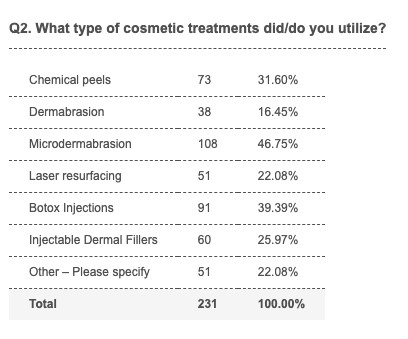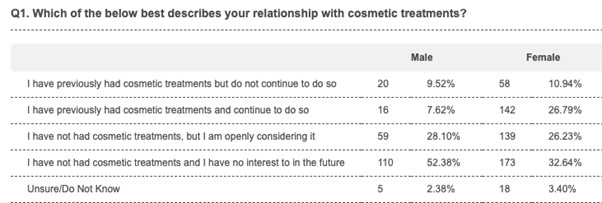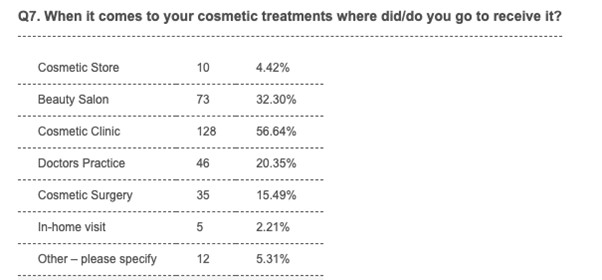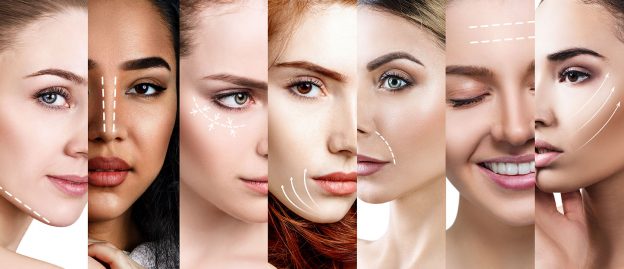With the huge rise in video and image-led social media platforms and the unprecedented ‘Zoom boom’ in video calls during the pandemic, our faces have never been more on show.
While some may now relish the opportunity to be seen in real life after months spent indoors, for others the pandemic era has provided an opportunity to see themselves from all angles, more often, and for longer periods.
Add to this expanded window of self-scrutiny the increase in life expectancy – plus the effects of the Australian sun – and the conditions are ripe for a post-pandemic cosmetic treatment boom.
‘In-and-out’ cosmetic procedures: the new normal?
Advances in treatments in recent decades have increased the availability of so-called ‘in-and-out’ minimally invasive procedures that can be performed quickly with little downtime, such as lasers, microdermabrasion, anti-wrinkle injections and fillers. The cost of these treatments – previously prohibitively high – is now more affordable for many patients, and the openness of high-profile influencers in sharing experiences and results on social media has made these procedures more acceptable and desirable.
In 2016, Australia’s annual spend on cosmetic treatments was among the highest of any country in the world. Fast forward five years through a global pandemic, and the Australian facial injectables market size was valued at USD $1.8 billion in 2020 with further growth expected, according to a market report from Grand View Research.
With the beauty and hair industry reporting a surge in bookings since reopening post lockdowns – including some salons, spas and clinics extending their opening hours to meet demand – it seems the appetite for cosmetic procedures has never been greater.
The most popular cosmetic treatments right now
We polled our patient research panel to get a deeper understanding of attitudes to cosmetic procedures and the types of treatments that are currently in demand.
Almost a third (32%) of those we surveyed said they had undergone some form of cosmetic procedure, with 67% of these patients continuing to do so.
The most popular types of procedures were microdermabrasion, Botox injections and chemical peels.

38% of respondents said they did not plan to undergo any form of cosmetic treatment in the future, while 27% said they had not previously undergone a procedure but they were actively considering it in the future.
Cosmetic enhancements: younger demographics driving growth
While plastic surgery was once seen as extreme in both side effects and price, the rise in non-invasive procedures means that appearance-enhancing treatments are no longer thought of as aspirational or something to try later in life.
The prevalence of younger social media and reality TV stars getting fillers, injectables and surgery is increasing the appeal of procedures among millennials and Gen Zs. The UK government recently banned under 18s from being able to have Botox or fillers amid concerns over a significant rise in such procedures among teenagers. It estimates that more than 41,000 Botox-style treatments were carried out on teenagers in England in 2020.
Although the number of under 18s seeking treatments is comparatively rare in the group we surveyed, we found those under 30 were more likely to be having treatments that are ongoing. Of the patients we polled, 55% of 18-24 year olds and 63% of 25-30 year olds revealed they had previously undergone cosmetic procedures and are continuing to do so.
It is possible that older generations who grew up with the notion that cosmetic procedures meant undergoing risky surgery are therefore wary of what today’s less invasive treatments actually entail. Prior to the social media age, the conventional media was all too keen to run stories of plastic surgery gone wrong, rarely pointing out when cosmetic surgery was a success.
In the current era, however, self-enhancement is normalised by celebrities and influencers who often show the before and after shots to their captive audience of followers (and in the case of Kim Kardashian’s famous vampire facial – even photos from during the procedure). The effect this has had is many younger demographics don’t see today’s cosmetic procedures as a big deal.
One female patient under 30 told us: “I don’t consider a microdermabrasion to be a risky or invasive treatment.”
The rise of male grooming and ‘Brotox’
Recent data suggests men are also driving the popularity of cosmetic treatments in what has been dubbed the ‘Brotox’ phenomenon. According to the American Society of Plastic Surgeons, there has been a 99% increase in men getting injectables over the past 20 years.
Our survey found that fewer men than women were currently undergoing procedures, however 28% of males we polled were actively considering it, compared with 26% of female respondents. 17% of male respondents said they had either previously had a cosmetic treatment or were continuing to have treatments.
One male patient in his 40s commented: “[I] am quite comfortable with the treatment I am receiving… the people are qualified so I am pretty assured.”

Rewards outweigh risks for the converted
So does the rise in the number of patients opting to have procedures mean a reduction in fears over potential risks and side effects? Perhaps.
Our survey found those who had never undergone any form of procedure were more likely to think cosmetic treatments were not worth the risk of complications. However, those with first-hand experience of them were much more confident that the benefits outweigh the risks.
59% of patients currently having treatments said they planned to continue for five or more years, and 76% reported an improvement in their appearance as a result.
Of those patients who decided not to continue with treatments, 7% reported negative side effects as a reason, and 10% said they had concerns around risk factors associated with procedures. But the main deterrent was affordability – with 48% of former cosmetic patients citing cost as a reason they stopped.
‘Do your due diligence. Check qualifications. Get peer reviews.’
Although clinics and salons offering cosmetic treatments are becoming ever more ubiquitous, patients are more likely to put their trust in cosmetic clinics over any other provider.
57% of those who have had treatments have previously attended a clinic, and 20% have been to a doctor’s practice.

When asked about what advice they would offer to a friend considering having a cosmetic procedure, many suggested conducting thorough research, doing ‘due diligence’ in finding the right provider, and getting recommendations from those with first-hand experience.
Seeking assistance from a qualified medical professional – whether for performing the procedure or getting a referral to a service provider – was one of the key recommendations among our survey group.
One respondent explained: “I went to a skin clinic and discussed my options and then proceeded with their recommendations.”
Another added: “I was confident because it was performed in a doctor’s office by a registered nurse.”
KEY FINDINGS:
- 32% of those polled have undergone some form of cosmetic procedure
- 67% of those who have had treatments continue to do so
- 57% of those who are considering a procedure want to reduce the appearance of ageing
- 8% of those who have undergone treatment had this performed by a surgeon
- 97% of those who have had treatments agree it is important the person performing the procedure is trained in that procedure

